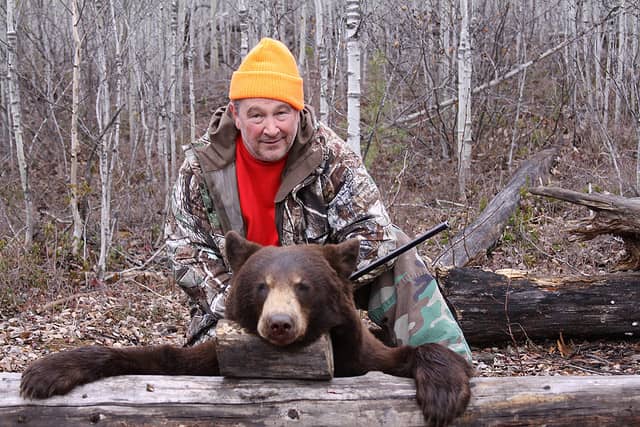Record Bear Harvest in 2011 in New York
OutdoorHub Reporters 03.01.12

Hunters in 2011 set a record number of bears harvested in southeastern New York, beating 2008’s record of 520 bears by 110 bears. conversely, the Adirondack region saw its lowest bear harvest since 1998. In every region of New York with the exception of the Adirondack, the number of harvested bears increased in 2011 versus 2010 numbers.
These changes in bear harvest numbers are due in part to a new hunting rule that expanded the bear hunting area and a longer hunting season.
The New York State Department of Environmental Conservation reported a record number of bear harvested while deer take was steady in 2011. This article focuses on the bear harvest. Read about the deer harvest here.
Original press release issued by New York State Department of Environmental Conservation on March 1st, 2012:
Hunters in New York State harvested 1,250 bears during the 2011 hunting seasons, New York State Department of Environmental Conservation (DEC) Commissioner Joe Martens announced today. A new record was set for the bear harvest in southern New York.
“Deer and bear hunting are long-standing traditions in New York, providing a valuable source of food and a means of shared recreation for many families,” Commissioner Martens said. “Throughout the state, hunters play a crucial role by helping to maintain healthy and ecologically sound deer and bear populations.”
Outside of the Adirondack region the 2011 bear harvest set new records, substantially exceeding previous record takes in central and western New York. In contrast, bear take in the Adirondack region dropped to a level not seen since 1998.
Hunters in southeastern New York harvested 630 bears in 2011, besting the previous record of 520 set in 2008. This was due in part to a new rule that expanded bear hunting in eastern New York State to include all or portions of seven new counties in eastern New York from Rockland and Westchester north to Washington beginning in 2011. Hunters took 50 bears from this new area, including 18 bears taken in Washington County, 11 in Rensselaer County, 10 in Columbia County, seven in Dutchess County, two in Putnam County and two in Rockland County. Yet even without these additional bears, take in the rest of the southeastern region exceeded previous record levels, reflecting a 25-year trend of generally increasing bear harvests in this region.
In central and western New York, the 2011 bear take of 353 greatly surpassed the previous record of 193 bears set in 2008. This was due in large part to a regulation change that moved the regular bear season opening day up one week to coincide with the start of the regular deer season. This change was implemented to reduce bear population growth and range expansion. Yet, as with bear take in the southeastern region, it is likely that even without these additional seven days of the regular season in the central-western region, bear take during the traditional season would have matched or exceeded the 2008 record, reflecting a 15-year trend of generally increasing bear harvests in this region.
In the Adirondacks, bear take was below the five-year average during each of the bear seasons and the overall bear take was down about 47 percent from 2010.
Bear harvest rates in the Adirondacks typically drop in the early season during years of abundant soft mast (cherries, raspberries and apples), while the take will increase during the regular season in years with abundant beech nuts.
This past season provided abundant soft mast, particularly raspberries and blackberries in September and October, and bear take during the early season was only 70 bears, about 70 percent below the five-year average. Beech nut abundance was mixed throughout the Adirondacks and the regular season bear take was approximately 15 percent below the five-year average. Additionally, much of the muzzleloading and regular season in the Adirondacks had above average temperatures and snow cover was inconsistent and relatively scarce making bear hunting all the more challenging.
Deer and bear harvest data are gathered from two main sources: harvest reports required by all successful hunters and DEC’s examination of harvested deer and bear at check stations and meat processors. Statewide harvest estimates are made by cross-referencing these two data sources. For more information about the 2011 deer and bear harvests, see DEC’s website at: www.dec.ny.gov/outdoor/42232.html.
2011 Black Bear Harvest Comparison
| 2011 Total | 2010 Total | Previous 5-Year Average (2006-2010) | |
| Statewide | 1,258 | 1,064 | 1,152 |
| Adirondack | 275 | 521 | 556 |
| Central-Western | 353 | 142 | 149 |
| Southeastern | 630 | 401 | 447 |

